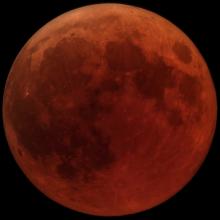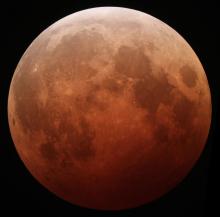Listen to today's episode of StarDate on the web the same day it airs in high-quality streaming audio without any extra ads or announcements. Choose a $8 one-month pass, or listen every day for a year for just $30.
You are here
Bright and Close
The Moon is full tonight. It’s known as the Hay Moon or Thunder Moon. And because July is the month in which humans first walked on the Moon, it’s sometimes called the Apollo Moon as well.
Whatever you call it, it’s especially bright. That’s because this month’s full Moon closely matches up with the Moon’s closest point to Earth. Late tomorrow, it’ll pass less than 224,000 miles away -- about 15,000 miles closer than average.
Such a close approach makes the tides especially strong. The tides are caused by the gravitational pull of the Moon and Sun. When the Moon is full, the Moon and Sun are on the same line, so their gravity pulls together. That makes the high tides higher and the low tides lower. And when the Moon is closer to us, its gravitational pull is a little firmer than average, jacking up the tides even more.
The full Moon doesn’t usually coincide with its closest approach to Earth. The Moon is full every 29 and a half days. But it’s closest to Earth once every 27 and a third days. So most months, they don’t sync up very well. This month is an exception -- a full Moon that’s especially close.
One other factor that goes into creating the tides is Earth’s distance from the Sun. We’ll be at our farthest on Thursday, so the Sun’s influence is a little lower than average. But the Moon is far more important in raising the tides -- which will be especially prominent over the next couple of days.
Script by Damond Benningfield





